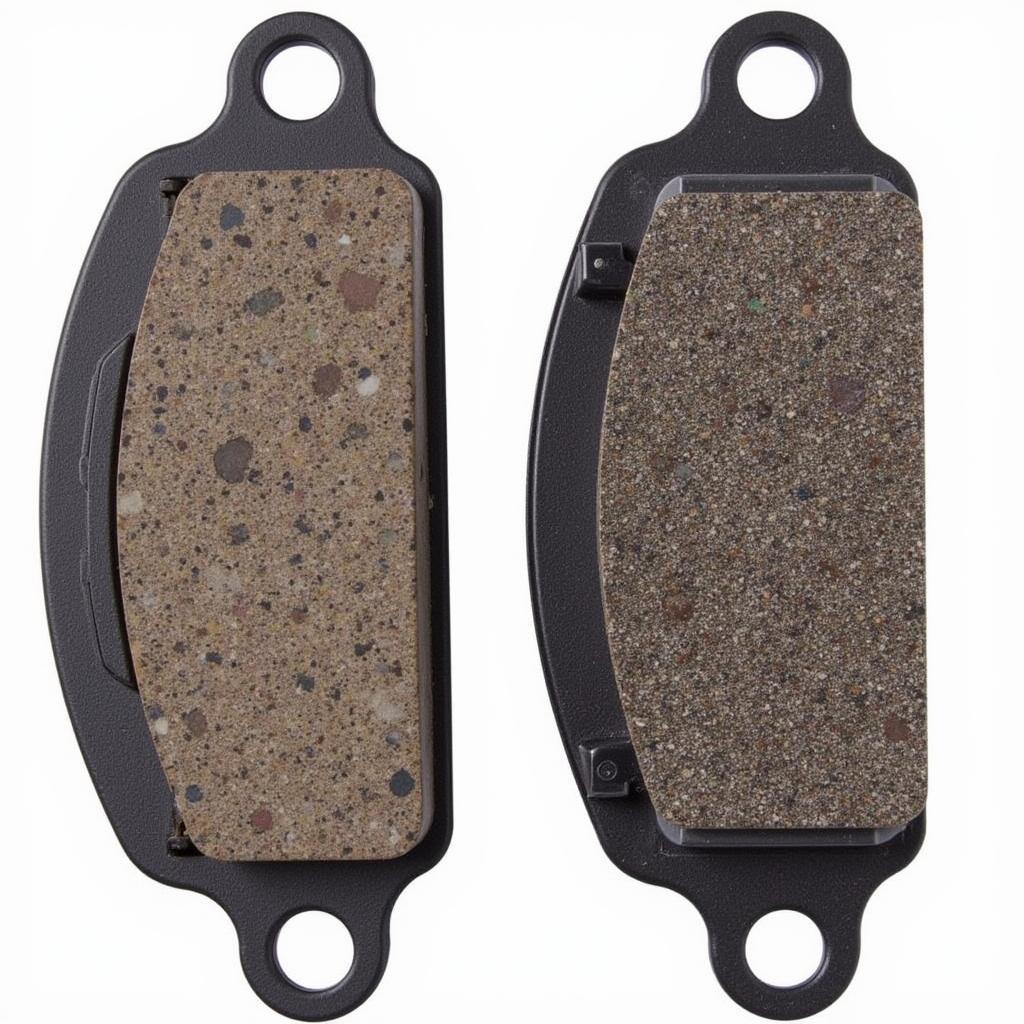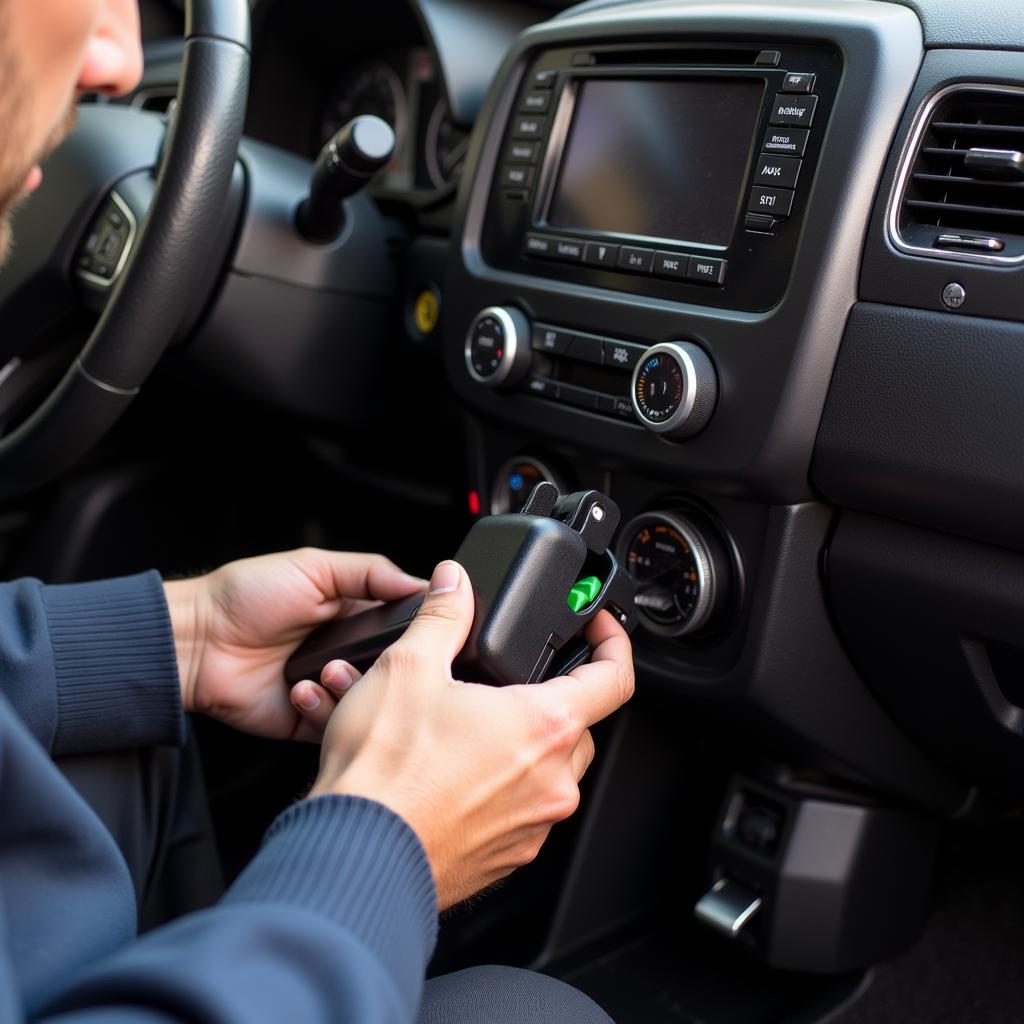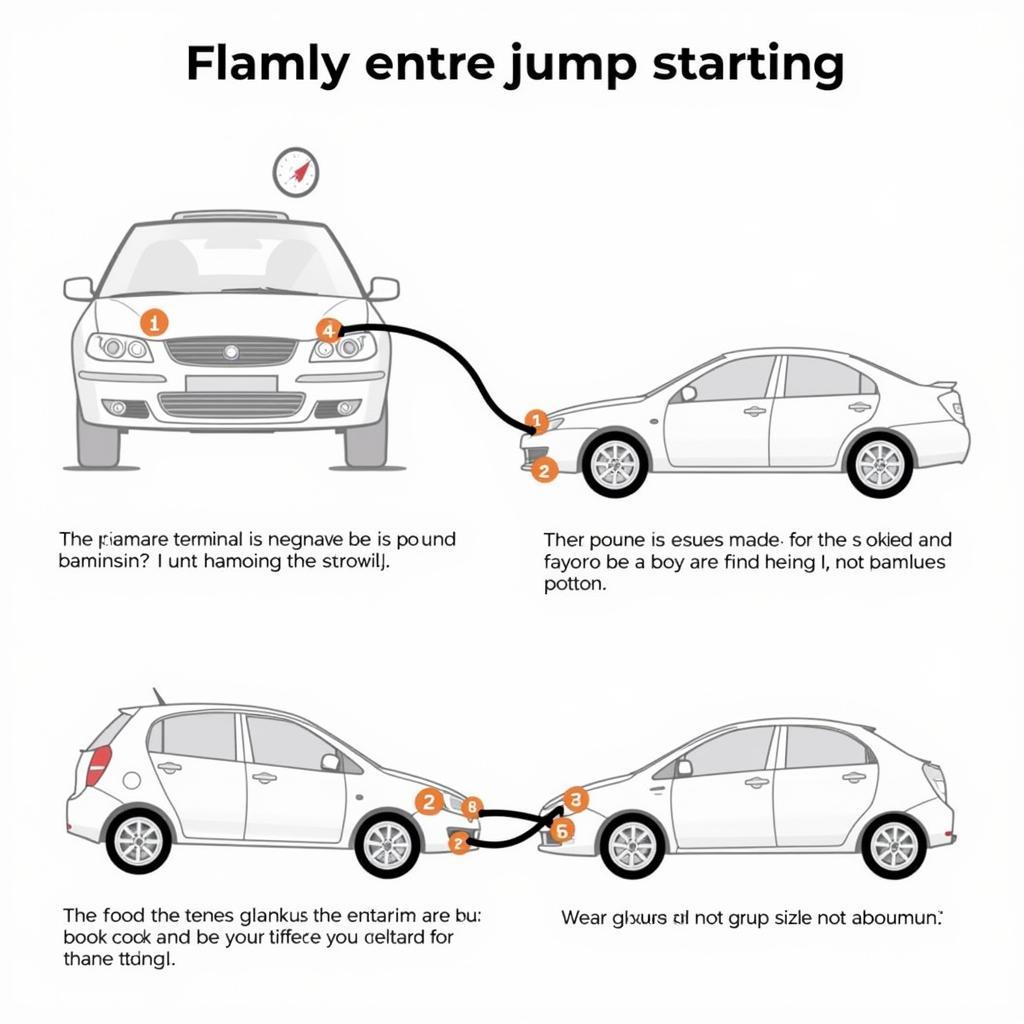The moment you see that dreaded brake warning light illuminate on your dashboard, a sense of unease can set in. Is it a minor hiccup or a major safety concern? The truth is, a glowing brake warning light shouldn’t be ignored. It’s your car’s way of telling you something needs attention within your braking system. This article delves into the common reasons behind this warning light and provides guidance on how to address them.
Understanding Your Car’s Braking System
Before we jump into the reasons behind a brake warning light, let’s take a quick look at the key components of your car’s braking system:
- Brake Pedal: This is where it all starts. Pressing the pedal initiates the braking process.
- Brake Master Cylinder: This crucial component converts the force from your foot on the pedal into hydraulic pressure.
- Brake Lines: These lines carry the pressurized brake fluid to each wheel.
- Brake Calipers and Wheel Cylinders: These components house the brake pads (for disc brakes) or brake shoes (for drum brakes), which actually clamp down on the rotors or drums to slow down or stop the vehicle.
- Brake Fluid: This specialized fluid is the lifeblood of the system, transmitting the hydraulic force needed to engage the brakes.
Common Reasons Your Brake Warning Light Is On
A brake warning light can be triggered by a range of issues, from minor to serious. Here are some of the most common culprits:
1. Low Brake Fluid Level
Why it’s important: Brake fluid is essential for your braking system to function properly. Low brake fluid is often the first sign of a leak or worn brake pads.
What to do:
- Check your brake fluid level: Park your car on a level surface and locate the brake fluid reservoir (refer to your owner’s manual if needed). Most reservoirs have minimum and maximum level markings.
- Add brake fluid if needed: If the fluid level is low, carefully add the recommended brake fluid type for your car (check your owner’s manual).
- Inspect for leaks: A consistently low brake fluid level indicates a leak. Thoroughly check the brake lines, hoses, and connections for any signs of wetness or fluid.
2. Worn Brake Pads
Why it’s important: Brake pads are designed to wear down over time. When they become too thin, it affects your braking performance and can damage the rotors.
What to do:
- Listen for noises: Squealing, grinding, or screeching sounds when you apply the brakes are telltale signs of worn brake pads.
- Feel for vibrations: Worn brake pads can also cause vibrations in the brake pedal or steering wheel when braking.
- Schedule a brake inspection: If you suspect your brake pads are worn, have them inspected by a qualified mechanic as soon as possible.
 Comparing New and Worn Brake Pads
Comparing New and Worn Brake Pads
3. Faulty Brake Light Switch
Why it’s important: A malfunctioning brake light switch can prevent your brake lights from illuminating when you press the pedal, posing a serious safety hazard.
What to do:
- Check your brake lights: Have someone observe your brake lights while you press the brake pedal. If they don’t light up, the switch could be faulty.
- Test the switch: You can try testing the brake light switch yourself (refer to your car’s repair manual or online resources), but it’s generally recommended to have a mechanic diagnose and repair electrical issues.
 Replacing a Brake Light Switch
Replacing a Brake Light Switch
4. ABS Issue
Why it’s important: Your Anti-lock Braking System (ABS) helps prevent wheel lockup during hard braking, improving vehicle control. A problem with the ABS system can compromise your safety, especially on slippery surfaces.
What to do:
- Look for additional warning lights: The ABS warning light may illuminate along with the brake warning light.
- Schedule a diagnostic scan: If you suspect an ABS issue, it’s crucial to have a mechanic perform a diagnostic scan to identify the specific problem.
What to Do When Your Brake Warning Light Comes On
1. Don’t Panic: While a brake warning light is a serious signal, it’s important to remain calm.
2. Assess the Situation: Are you experiencing any unusual braking behavior, noises, or vibrations?
3. Find a Safe Place to Stop: If possible, safely pull over to the side of the road or find a safe location to stop and assess the situation.
4. Check Your Owner’s Manual: Your car’s owner’s manual often provides specific guidance and troubleshooting tips for warning lights.
5. Seek Professional Help: If you’re unsure about the cause or severity of the problem, err on the side of caution and contact a qualified mechanic as soon as possible.
Remote Diagnostic and Repair Options
In some instances, remote diagnostics and programming services can be valuable tools in addressing brake warning light issues. For example:
- Software-related faults: Modern cars rely heavily on software. If the brake warning light is triggered by a software glitch, a remote technician might be able to diagnose and potentially resolve the problem remotely.
- Programming and calibration: After replacing certain braking system components, programming or calibration may be required. Remote technicians can sometimes assist with these procedures.
Remember, remote solutions may not be suitable for all situations, especially if the issue is mechanical in nature.
Brake Warning Light: Your Safety Net
Think of the brake warning light as your car’s way of saying, “Let’s get this checked out.” Addressing the issue promptly helps ensure your safety and the optimal performance of your vehicle.
This article is intended to provide general information and guidance. If you encounter a brake warning light or any other automotive concerns, it is essential to consult with a qualified mechanic for accurate diagnosis and repair.


